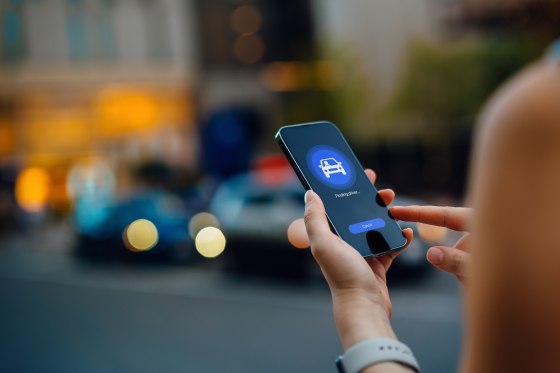This week on Andrea Canning’s podcast Dateline: True Crime Weekly, she asked former Secret Service agent Evy Poumpouras for some tips to help protect yourself and stay safe while using rideshares.
You can listen to the full episode now, for free.
Plus, read a transcript of their exchange below:
Canning: Evy, tens of millions of Americans use rideshare services every year and that number is only growing. But as services like Uber and Lyft have gained in popularity, there has also been concern about these companies properly vetting their drivers. According to Uber’s 2019 to 2020 U. S. safety report, nearly 4,000 sexual assaults were reported to the company. Evy, these numbers sound very concerning. Um, tell us, what are some of the things that we should consider before getting into that car with that driver?
Evy Poumpouras: Yeah, these numbers are sad, but I have to tell you, not surprising. You don’t know who’s behind the vehicle. So I want you to think, “There’s a total stranger coming to pick me up.” That’s what you should have in your mind.
Canning: One of the biggest mistakes I make all the time is when the rideshare vehicle shows up I always say, “You’re here for Andrea?” I need to say to them, “Who are you here picking up?”
Poumpouras: Yes. You could say, “What’s your name? Who are you here to pick up?”
Canning: Exactly.
Poumpouras: Also, think about where they’re picking you up, especially if it’s your home. Maybe stand a few doors away from your house, move the pin to pick you up on a corner somewhere. You should especially do this if you are leaving for a long period of time.
Canning: One of the things I’ve heard people mention is take a photo of the license plate and text it to your parent, a friend. And it’s not a bad thing, necessarily, if the driver sees you doing that.
Poumpouras: No, it’s totally fine. Take a photo of the tags of the vehicle. The other thing is location sharing. You can turn that on with your friends and family so they can see where you are and where you’re going. The other thing, too, if you’re in the vehicle, I know sometimes we like to check out. We want to put our headphones in and listen to music. I’m going to tell you, either don’t do it or, if you do it, have the volume low enough so you can hear what’s going on. And please pay attention. Look at where the driver is taking you. I cannot tell you how many times I’m in the back seat, and I pull up my Google Maps and I will double check the route they’re taking. And if I see that they’re taking me a different route, I will ask them, “Why are you going this way?” Perpetrators -- they don’t want problems. They want easy targets.
Canning: Yeah. And I really like the idea of not being afraid to put the driver on notice.
Poumpouras: If you’re feeling uncomfortable, please listen to it. Even if you can’t explain something, just trust yourself. Also, maybe have something with you. I always think about what’s in my purse or in my bag that I could use. How am I going to fight? So keys, pens, those are great things.
Canning: If a woman is taking a rideshare home and perhaps they live alone, do you think that they should be dropped off somewhere other than their house or their apartment?
Poumpouras: I’ll tell you this: If you drop me in front of a New York City building, good luck figuring out what my apartment number is, right? You’re OK there. But if it’s a house, and you live alone, yeah -- just change the number up a bit. You can walk the little bit over to your front door.
Canning: And watch the vehicle drive away.
Poumpouras: Well, what you’re talking about is situational awareness. I never walk in front of the vehicle when I get out. When I get out the door, I always walk back and around of the trunk because I want to have the vehicle in my line of sight. And I walk slow and most of the time they end up driving away before I get to my door.
Canning: Evy Poumpouras, thank you so much for coming back.
Poumpouras: Thank you. Safety first, everybody. And then get to where you need to go.
Canning: Yes, and then have fun.
Poumpouras: Of course.
